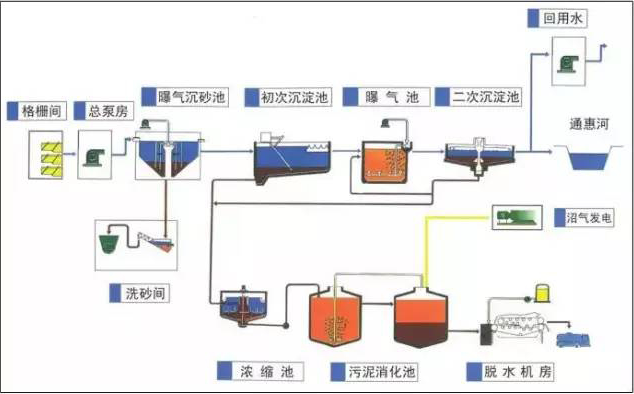Characteristics of Ozone Used in Municipal Wastewater Treatment
Ozone has strong oxidizing ability, which can destroy the molecular structure of organic pollutants and change their properties. Under certain conditions, it can improve the ability of conventional processes to remove constant organic matter, and has strong sterilization and disinfection effects. It also has deodorizing, fading, iron and manganese removal effects, and can effectively oxidize and decompose organic matter.
After secondary treatment, the water quality of urban sewage is improved and the bacterial content is significantly reduced. However, there are still a certain number of bacteria that must be removed before the wastewater can be safely discharged into water bodies or recycled. With the continuous improvement of residents' requirements for quality of life, the impact of secondary treatment effluent from sewage treatment plants on urban water bodies has attracted more attention to health and safety issues. Disinfection is one of the basic methods for inactivating these pathogenic organisms, so the tail water disinfection of sewage treatment plants has become an important process in sewage treatment. Water treatment professionals are constantly exploring the best methods for sewage disinfection, and ozone is one of the best sterilization and antibacterial solutions.
In the municipal sewage treatment process, the necessary unit treatment process, in addition to water disinfection, is water decolorization. Ozone treatment does not require the addition of other chemicals to the water. The color of water is mainly caused by dissolved organic matter, suspended colloids, iron and manganese, and particulate matter. The strong oxidizing ability of ozone can make the water clearer.
Advantages of using ozone for wastewater treatment
Ozone has the following advantages in wastewater treatment:
1. Ozone can effectively remove COD, anionic detergents, and ammonia nitrogen from sewage, and at room temperature, ozone can be reduced to oxygen after about 30 minutes, so there is no residue or secondary pollution;
2. Ozone can be manufactured on the production site, and compared with liquid chlorine and sodium hypochlorite, it does not require storage and transportation, reducing operational hazards;
Ozone has a strong oxidizing effect and a fast reaction rate. Ozone has good bactericidal and lethal effects on microorganisms, bacteria, and viruses, and its bactericidal effect is superior to disinfectants such as chlorine, chloramine, and chlorine dioxide. At the same time, it can also oxidize and degrade other pollutants in water;
4. The remaining ozone in water can quickly decompose naturally into oxygen, and the effluent contains high levels of dissolved oxygen. When discharged into the receiving water body, it does not increase the burden on the water body and can improve the water quality. It is the cleanest disinfectant. Ozone generator, ozone machine
Application technology of ozone
The application technology of ozone generation in water treatment mainly includes four basic parts: generation, cooling, drying, and steam water mixing, as well as six aspects: electrical control system and structural system. Air gap discharge method is often used for ozone generation in water treatment. Due to concentration requirements, power consumption increases and device temperature rise cannot be avoided. Temperature rise is the main factor affecting ozone generation and equipment life, so cooling is generally required, mainly including air cooling and water cooling. Under the same conditions of ozone generating components and power supply, the ozone production is directly proportional to the dryness of the gas source. Currently, the main methods for drying gas sources include freezing, dew condensation, chemical methods, etc.
The air-water mixing device is an essential supporting equipment for the use of ozone in water treatment. Although ozone is easily soluble in water and has a solubility more than ten times higher than oxygen, certain technical means must be used to ensure full contact between ozone and water. The contact area, time, ozone concentration, pressure, etc. are all determining factors of mixing efficiency.
So although ozone is widely recognized as an efficient and safe method of sterilization and inhibition, its technology is relatively complex and requires precise control during operation. Currently, China is vigorously developing ozone wastewater treatment technology in order to provide better water quality and living standards for the people.





